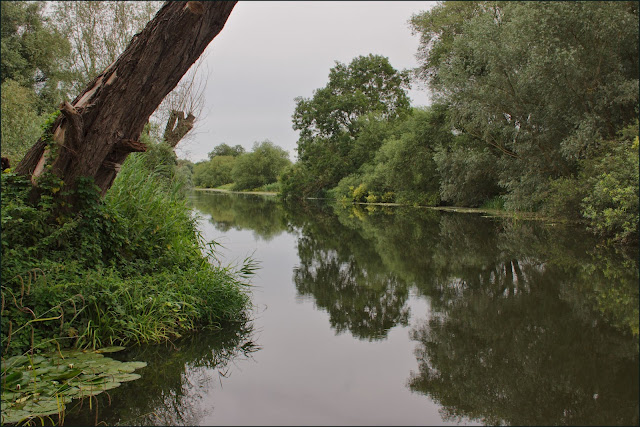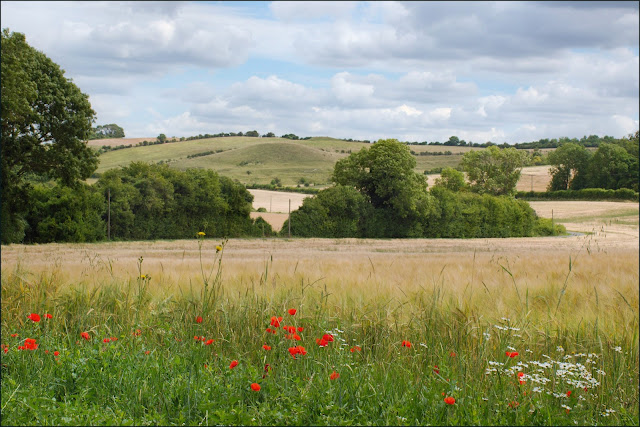Alan Bloom, the man who founded the garden at Bressingham, had other enthusiasms besides gardening. One of these was steam trains, and that hobby also spilled over onto the Bressingham site. As we made our way towards the Dell Garden we passed by the Oakington signal box. Oakington is just a few miles from Les's house.
After our walk around the gardens (and a good lunch in the café) we made our way to the exhibition space.
First of all you pass through the "Dad's Army" exhibition. Much of the TV sitcom was filmed around here. Corporal Jones's delivery van has now made its final delivery and has retired to Bressingham.
As has his butcher's shop.
Here is the fire engine with which the brave men of Walmington-On-Sea attempted to infiltrate "the enemy" during a training exercise. Several of the old vehicles featured in the series were on loan from Alan Bloom's collection.
The Dad's Army exhibits fade in rather muddled fashion into the steam engine museum. Behind the small green locomotive you can see the full-size mail coach. We can take a peek inside...
I remember having one of these in my toy train set. It automatically picked up a mailbag hung from a trackside gantry. Magic! Here you can see where the letters were sorted as the train sped along its way.
There are a number of these wonderful machines, but they are crammed into a small space and were not easy to photograph.
I didn't really expect to use these photos for a post and, although I read the information boards, I can't remember many details about these old steam locos. There were a few old steam traction engines too...
There were various other steam-driven devices on show. Those red and green lines are all applied by hand. And who nowadays would design a pressure valve to look like a Grecian urn?
But we had to have another look at that signal box. Mum's brother, our Uncle Bill, was for a time the signalman at Old North Road station, near Longstowe, and we once visited him at work and were allowed to pull the big levers that operated the points and signals (probably a lever that wasn't in use). An unforgettable experience for little boys!




























































